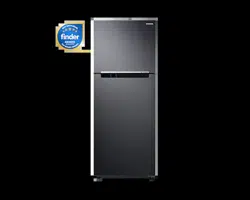#1 How to install the refrigerator water supply line?
Before you start, there are several items that you need to purchase to complete this connection. You may find these items sold as a kit at your local hardware store. You will need the following tools:
When you use Copper Tubing:
¼” (6.35mm) copper tubing
¼” (6.35mm) compression nut (1 pc)
Ferrule (2 pc)
When you use Plastic Tubing:
¼” (6.35mm) plastic tubing → Molded end (Bulb)
¼” (6.35mm) compression nut (1 pc)
Note:
The new hose-sets supplied with the appliance are to be used and that old hose-sets should not be reused.
The water line MUST be connected by a qualified technician.
The warranty for your refrigerator does not cover the water line installation. The water line installation will be performed at your own costs unless the installation fee is included in the retailer’s price.
Samsung takes no responsibility for the water line installation. If water leaks occur, contact the installer of the water line.
Connecting to the Water Supply Line
First, shut off the main water supply.
Locate the nearest cold drinking water line and install the pipe clamp (A) and the shut-off valve (B).
Connect the water line installation kit (C) to the shut-off valve (B).
Note:
Only connect the water line to a drinkable water source.
If you have to repair or disassemble the water line, cut off 1/4“ of the plastic tubing to make sure that you get a snug, leak-free connection.
When flushing the water lines for the first time, water will not dispense immediately because air is in them.
You can test the water line by quickly using a paper cup.
Under normal conditions, the water dispenser can fill a 5.75 oz (170 cc) cup in about 10 seconds.
If you have been holding the dispenser lever for over 3 minutes and water is not being dispensed, verify that the water supply valve is open and that power is being supplied to the unit.
Connecting the Water Supply Line to Refrigerator
Connect the household water line (A) to the assembled compression fitting (B).
If you are using copper tubing, slip the compression nut (C) (not supplied) and ferrule (not supplied) on the copper tubing (not supplied) as shown.
If you are using plastic tubing (B), insert the molded end (Bulb) of the plastic tubing (B) into the compression fitting.
Note: Do not use without the molded end (Bulb) of the plastic tubing (B).
Tighten the compression nut (B) onto the compression fitting.
Note: Do not overtighten the compression nut (B).
Turn the water on and check for any leakage. If you find water drops or leakage in the connection areas, turn off the main water supply. Check the connections and, if necessary, tighten.
After installing the water line, flush the water line and filter by pressing and holding down the water dispenser lever with a container to catch the dispensed water. Dispense at least 7~11 litres (2~3 gallons) of water to ensure that all air and impurities have been flushed from the system.
After flushing, the lines, test the water pressure to verify it is at a minimum water pressure of 20 psi. Test the water pressure by dispensing water into a measuring cup for 10 seconds.
• If at least 163 grams (5.75 ounces) of water are dispensed, the water pressure is above 20 psi.
• If the refrigerator is installed in an area with low water pressure (below 20 psi), you should install a booster pump to compensate for the low pressure.
After you turn on the refrigerator, let the ice maker make ice for 1 to 2 days. Over that period of time, throw out the first 1 or 2 buckets of ice that the freezer makes to ensure all impurities have been removed from the water line.


